As tradition gives way to modern life, many sunset trades are destined to fade into the pages of our history books. Such is particularly the case in fast-paced Singapore, where the cost of living is high and space comes at a premium. The lack of an agricultural hinterland means that the raw materials commonly needed for traditional crafts also grow increasingly challenging to obtain.
Fortunately, a crop of young artisans are finding new ways to keep these invaluable cultural practices alive. Some of them pursue these passions outside of their day jobs, while others have devoted their career to their craft. Hear from four of them here, and find out where you might try your hand at these crafts too.
Ng Siying, rattan artisan
On the table sits a teapot with a beautiful handle made of woven rattan. Pouring a warm cup of hojicha from it, 30-year-old product designer Ng Siying shares her affection for Mr Chen and Mdm Lee of Chun Mee Lee Rattan Furniture. She spent a year learning the art of rattan from the couple. What had begun as an unexpected post-graduation residency sent Ng down a rabbit hole of discovering this humble material’s charm and relevance in contemporary society.


Rattan is a material derived from the stem of the climbing palm, once commonly used for furniture and handicrafts in Southeast Asia. Singapore’s rattan trade boomed between the 1960s to 1980s, due to the quality craftsmanship of its makers, and Singapore’s position as a regional research centre for this material. But the changing times of the 1990s led to dwindling consumer interests, and eventually, rattan’s decline.
Ng seeks to expand the functional and aesthetic possibilities of rattan, and take it beyond a medium of nostalgia
Ng seeks to expand the functional and aesthetic possibilities of rattan from where the industry left off decades ago, and take it beyond a medium of nostalgia. The results are multiple experimental series, including Rattan as Wrap (2017–2021) and Rattan as Weave (2021–ongoing). “I have to keep learning from different sources and disciplines. It expands my view of what rattan can be, so that we don’t look at it as only a piece of furniture,” says Ng.
“For me, it’s about elevating rattan. When I was at the rattan shop, even though I like the material, I feel that a lot of the furniture there is dated. Our living circumstances have since changed, but the design of rattan has by and large remained the same,” she elaborates.
As the resident cats, Fungus and Gingko, bask gloriously under the midday sun, a piece that Ng has been reworking awaits its eventual form. From within the walls of her bedroom, Ng weaves a new chapter of rattan.
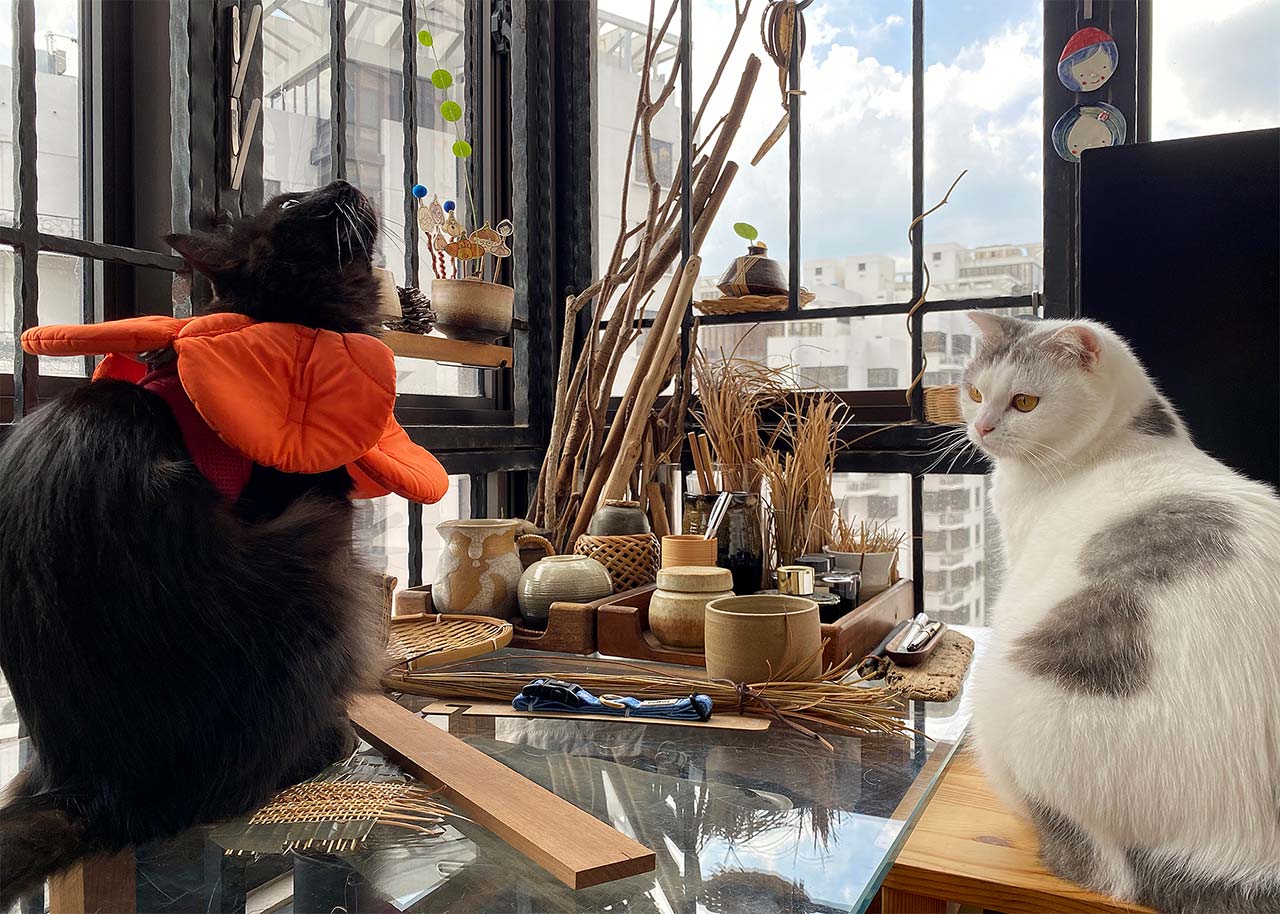
Jeanette Adrienne Wee, ceramicist
“The sweatshop is here,” 32-year-old Jeanette Adrienne Wee declares with a big, proud smile. The late afternoon air in this semi-outdoor studio is humid, but around her, mounds of clay are being lovingly moulded, baked and glazed into unique vessels.
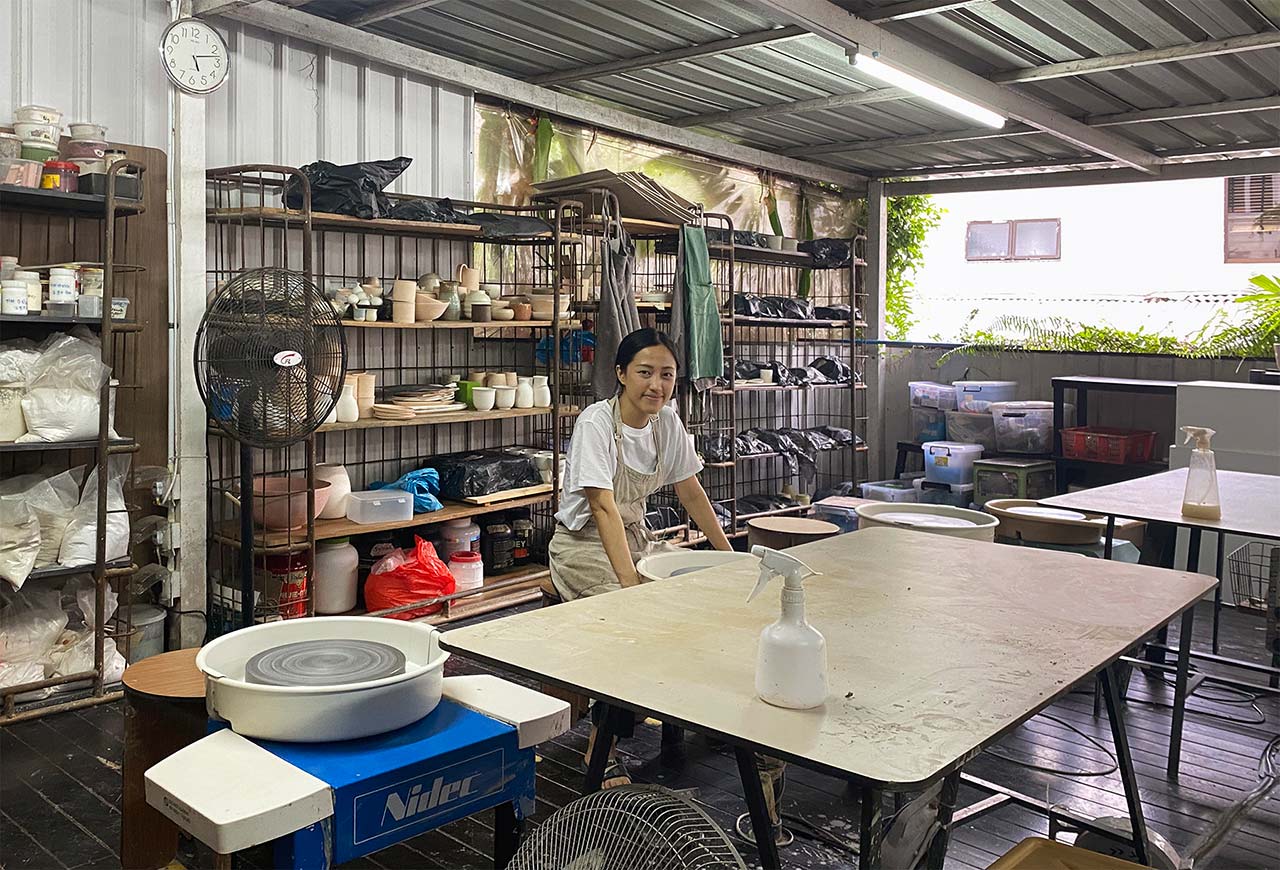
Conditions of pottery-making have not been the same since the disappearance of dragon kilns in Singapore in the 90s. The mid-20th century witnessed the boom of the pottery industry, fuelled by the flourishing rubber plantations – more than 20 of these high-capacity brick-built dragon kilns fired like clockwork to supply earthenware for rubber tapping. As plantations shrank, so did the commercial demand for pottery.
When asked about pottery as a dying trade, Wee counters that it has instead experienced a revival thanks to social media. “Pottery is visual. It’s big on ‘flow’ to make something from start to finish, and that takes very well with social media. For better or worse, it’s gotten a lot of traction and that has helped us with our business. People are now more aware of how ceramics are made.”
Wee has been honing the craft and developing a distinct style in her personal practice. She’s also the co-founder of pottery and homeware studio, Ves.studio. Having apprenticed with Singapore’s Cultural Medallion recipient Iskandar Jalil and completed residencies in Japan and Korea, she now imparts knowledge to her students and studio assistants in a similarly rigorous fashion.
“Perfect imperfection comes from honing skills. It’s not an accident. That’s what I tell my students – I know you made the effort to make the cup, but if it’s not a good cup, it’s not a good cup. We need to take a hammer, smash it in the back, throw it away and move on,” she asserts.
Perfect imperfection comes from honing skills. It’s not an accident
“Sometimes my students would ask how I can do certain things. It’s very hard to teach. It took me years to get the flow right. To create a texture that isn’t contrived is a skill. You really need to practise.” It is this belief that keeps Wee returning to the wheel day after day, and becoming a student all over again, too.

Fajrina Razak, batik artist
As the day cools, Fajrina Razak is one of the few souls lingering around Telok Kurau Studios (TKS), Singapore’s first and oldest arts housing project. This is where the 34-year-old practises her beloved art of batik, which she sees as a way to reconnect with her Javanese roots and spirituality.
“I have always wanted to do batik since art school, but didn’t have a chance to. The desire of wanting to understand the medium, to learn about my own identity came from there,” Razak recalls. She eventually found her way into the art form by connecting with senior artists from the only Malay art association in Singapore, Angkatan Pelukis Aneka Daya (Apad).
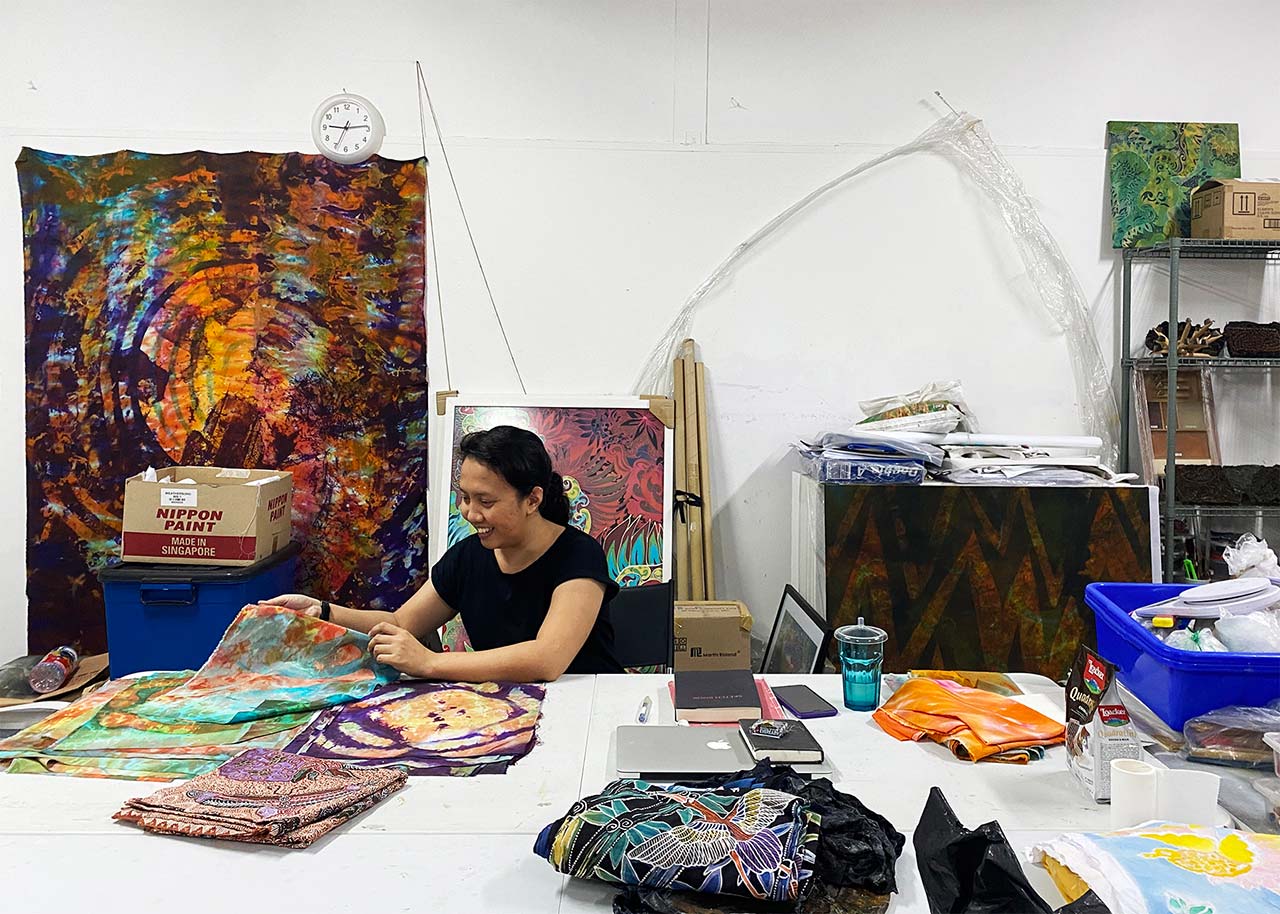
Singapore’s multi-layered relationship with batik is epitomised by the sarong kebaya uniform of the Singapore Girl. Yet, despite its cultural and diplomatic significance, Singapore largely serves as a entrepôt for batik to be distributed to other corners of the world. Local interest in the material also skews more towards batik as a fashion statement than towards the techniques of the craft, which originated in the 1600s.
Razak’s own commitment in batik transcends fashion and aesthetics. Since picking up the medium, she has in turn nurtured her own communities and developed ecosystems to keep the craft alive. Apart from teaching, exhibiting, curating and taking on leadership positions in both TKS and Apad, Razak also founded 405 Art Residency back in December 2020. She invites emerging artists to share her studio and experiment with batik in relation to their individual practices, through this residency programme.
“Although batik is known as a medium originating from Java, it has a varied and storied history worldwide,” she explains. “This prompted me to extend the medium to more diverse artists, as a reflection of Singapore’s multiculturalism as well.”
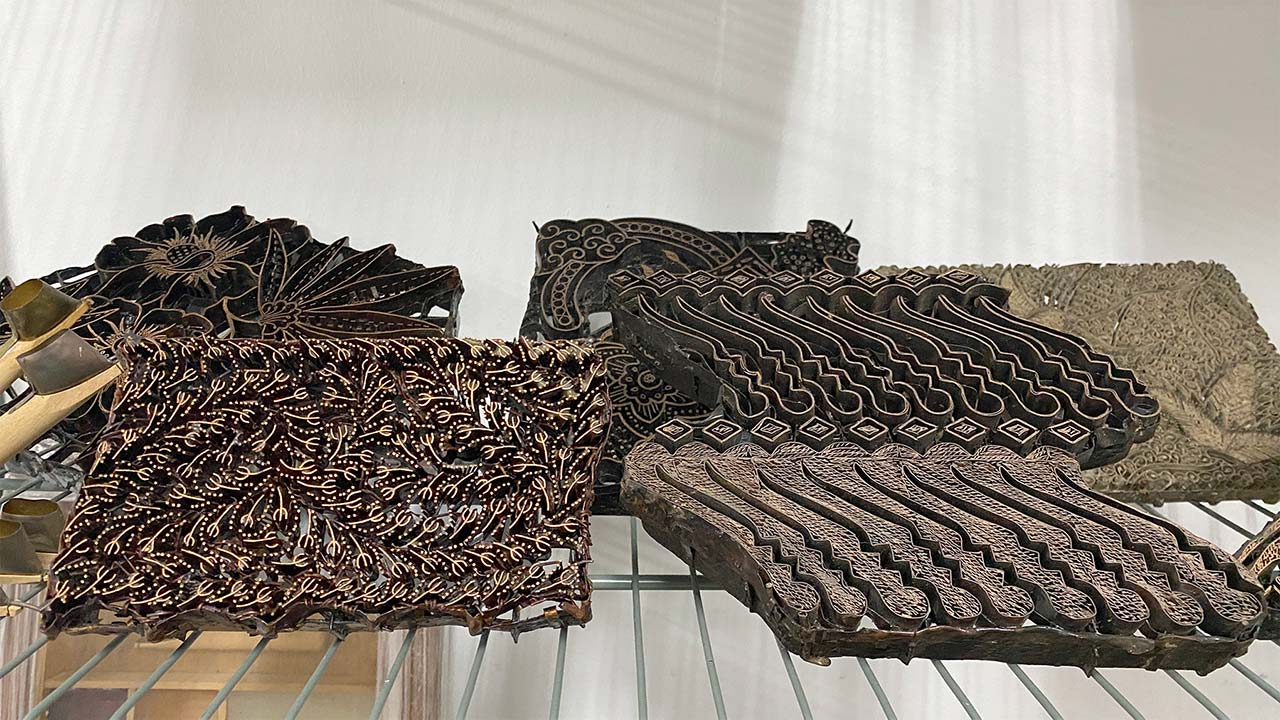
Kim Choy, chairmaker
In an age where technology reigns supreme, 38-year-old Kim Choy went against the grain by leaving his job as a web programmer for a craft-based practice at 29. He has always enjoyed the tactile nature of woodworking, so he completed a chair-making course in Melbourne, Australia, and turned his hobby into a career. The transition took guts – and also parts of two of his fingers when he got into a nasty table saw accident. He eventually decided to focus solely on chair-making, since these particular forms do not require the use of the offending equipment. Undeterred by the accident, he founded Shibui Furniture Collective in 2019, and has been perfecting his craft ever since.
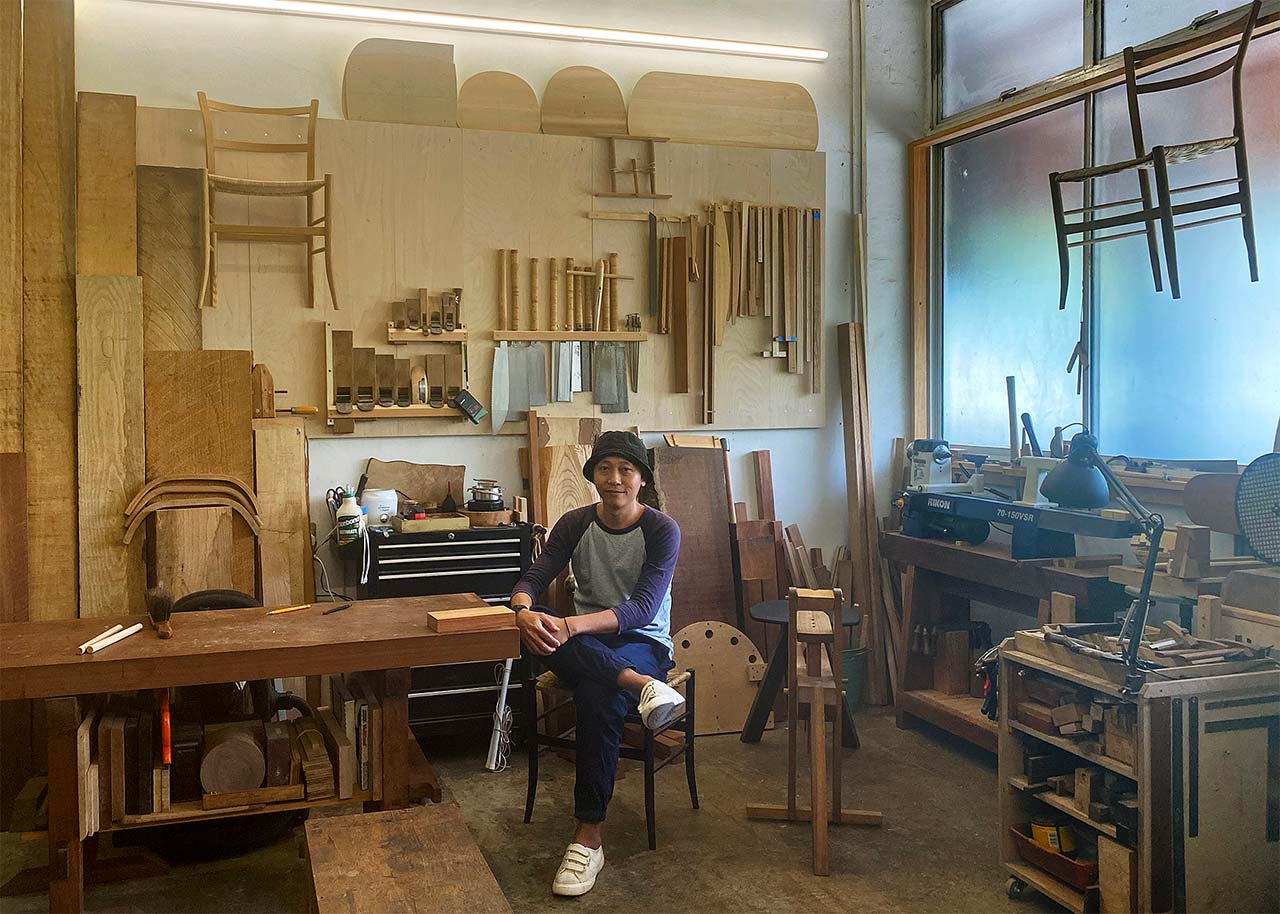
A craftsman should be able to make one chair, and the tenth chair should still look the same. This is where your skill lies
Furniture making and restoration used to be a flourishing business in Singapore prior to the 1980s – but as rents skyrocketed and the local workforce increasingly pursued desk-bound jobs, it too met the same fate as other traditional handicraft trades. These days, those seeking to decorate their homes are far likelier to grab chairs off the rack from the neighbourhood IKEA. Yet, chair-makers like Choy insist on the intangible value and rewarding process of making each chair by hand.
“When people talk about handcrafted furniture, they get the idea that everything one-off is beautiful,” he says. “But a craftsman should be able to make one chair, and the tenth chair should still look the same. This is where your skill lies.” It’s perhaps ironic that an artisan should pursue a consistency which mass production is easily able to achieve, but the devotion and meticulousness that he puts into each handmade piece is certainly of a different standard.


These days, Choy shares his hard-earned expertise with students who sign up for his chair-making workshops. Keeping the classes small, Choy takes them through the process, history and cultural contexts of chair-making, inspiring greater thought about this ubiquitous object. When one walks out of his studio, perhaps even the red plastic chair in the coffeeshop might sit a little differently.
Where to experience these crafts in Singapore
Shibui Furniture Collective: Craft your own chair, stool or bench using traditional chair-making techniques taught by Choy.
Potter’s Guilt: Those seeking a more extensive course may look to Wee’s classes at Ves.studio, but if you’re only visiting Singapore for a short time, explore a taster session at Potter’s Guilt.
Ozel: Try your hand at batik at Ozel’s studio in the historic Kampong Glam neighbourhood.
To learn more about Singapore Airlines’ flights to Singapore, visit the official website. Hero image by Jonathan Tan. All other photos by Woong Soak Teng unless otherwise stated.
The post Meet Singapore’s next generation of traditional craft makers appeared first on SilverKris.
from SilverKris
No comments:
Post a Comment